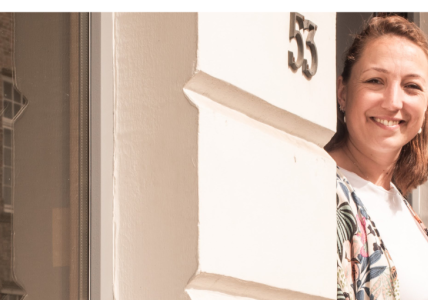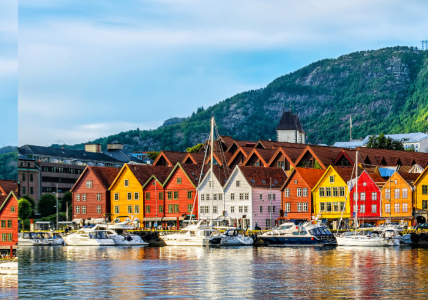Have you ever wondered if it is worthwhile cooperating with other Interreg projects or programmes? Yes, say the eight project managers we interviewed.
Joint conferences and tools, communication, and coffee meetings. Cooperation comes in many shapes and forms. In this article, you will be introduced to 5 examples of project collaboration and learn how to get the most out of it.
Synergies, not overlaps
Many themes covered by North Sea Region projects are so broad and urgent that approaching them from different angles is necessary. Consequently, there are projects that work with similar issues and methods. Many of these projects have found each other and established close connections to exchange methodology, expertise and findings.
By starting to cooperate early, projects working with similar topics can make sure to complement each other and avoid duplicating any work. Through working together, all parties can expand their reach and impact, get access to new tools and knowledge, and generate new ideas and partnerships.

1. Sharing methodologies
TOPSOIL and SalFar are both working to increase the region’s resilience to global warming. While TOPSOIL explores soil and groundwater structures, SalFar develops farming on soils that become salinised due to global warming, threatening future food security.
Since soil conditions are central in both projects, they exchange knowledge and have even teamed up on water management along the Flemish coast. TOPSOIL’s satellite-based methods were new to SalFar and turned out to benefit both projects.
TOPSOIL has also delivered a salinity map of the Belgian coastal plain which turned out to be useful for SalFar. The projects discovered that the map could serve an unexpected purpose – to find out where freshwater availability could be improved, and also where not.
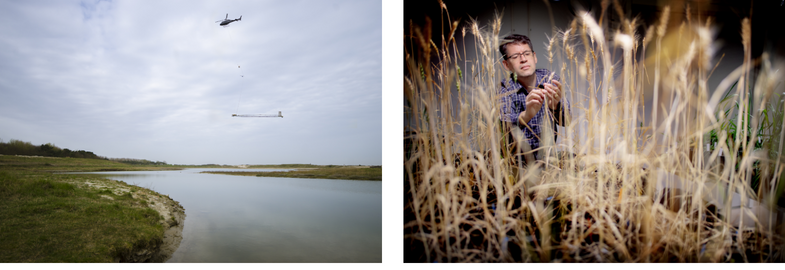
TOPSOIL’s methods turned out to be useful for SalFar
2. Creating joint products
Like! and CORA share a common goal: to foster digitalisation in the region. Like! focused on providing public servants with skills and knowledge to deliver digital services and tool. CORA empowers local authorities in rural areas to test innovative solutions.
CORA participated in Like! events to share methodology and findings. In addition, the projects created a joint training course Creating a Digital Innovation Culture to help local governments assess digital skills, train staff and create a digital innovation culture.
“Cooperating with other Interreg projects has helped us to enlarge our view on different approaches, methods and cultures to effectively handle transnational collaborations,” says Peyman Khodabakhsh, manager of CORA. “One learning from cooperating with Like! was the importance of setting a clear joint vision. Finding the common theme was the most difficult and time-consuming part of this cooperation.”
Like! got new inputs for their capitalisation efforts. Renske Stumpel, manager of Like!, says: “I think the main learning for us has been that we need to tell the stories about our findings as soon as we can and use the available content to the utmost. So we make learnings available to wider audiences.”
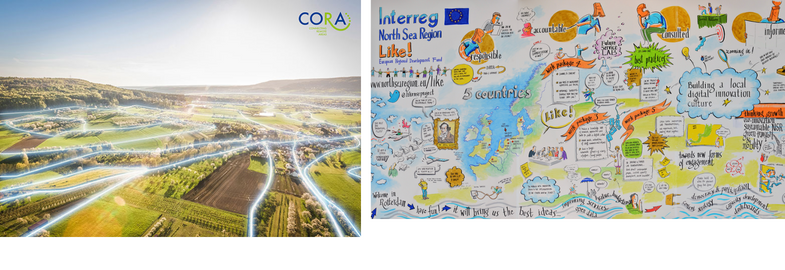
CORA and Like! improve digital services
3. Improving and promoting each other’s solutions
Sullied Sediments and NuReDrain both work to provide cleaner waters. While Sullied Sediments develops new tools to tackle chemical contamination of waterways, NuReDrain works on filtration systems to recover nutrients from agricultural waters.
The projects have set up annual meetings to update each other and exchange ideas. In addition, they worked closely together on testing a pollen-based method to remove chemicals from discharge water. NuReDrain partners undertook an early field test with the RiverDip mobile app developed by Sullied Sediments and could in turn provide feedback about the app’s effectiveness. The projects even send out each other’s newsletters and webinar invitations to support each other and expand their networks.
“Attending each other’s project meetings revealed that the projects are organised in different ways. Sullied Sediments rewards project partners in a fun way. For example, who delivered his report in time, who was the most active via mail. This is something I could take home,” says Charlotte Boeckaert, manager of NuReDrain.
“Working closely with NuReDrain enabled us to speed up our own ideas and progress on pollen methodology. We feel we have all become like an extended family, having met the external challenges of Brexit and Covid-19 while continuing to deliver the projects,” says Jeanette Rotchell, manager of Sullied Sediments.
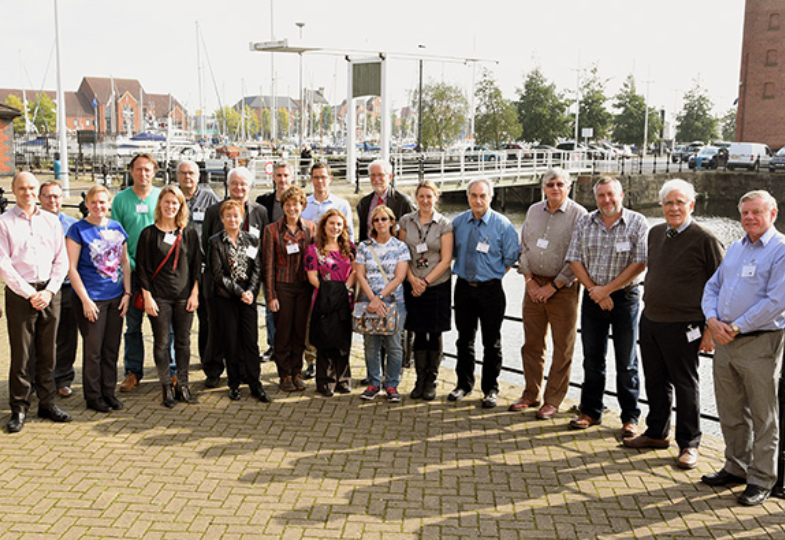
NuReDrain attended Sullied Sediments annual meeting in 2017
4. Attacking the problem from complementary angles
C5a is a North Sea Region project with partners from seven other climate adaptation projects. C5a originates in the North Sea Conference 2017, where BEGIN, Building with Nature, Canape, Catch, FAIR, FRAMES and TOPSOIL started working together. The set-up was first called 7up, a short for “7 unexpected partners” which eventually became the C5a project. All seven projects work with flood and water management but with different focus areas.
Each project has its own strengths, which is why the projects can complement each other. While BEGIN and CATCH provide knowledge on urban planning, Building with Nature has expertise on nature based solutions in riverine and coastal systems, CANAPE on peatlands, FAIR on adaptive asset management, FRAMES on multi-layered safety approaches and TOPSOIL on soil and ground water.
C5a brings together urban planners, mobility experts, evacuation scientists, water managers, nature conservationists and architects. The project has worked with developing flood safety in urban areas and done a case study of impacts of global warming in river areas. Multidisciplinary working and input from various projects enable the project to identify new, region-specific solutions.
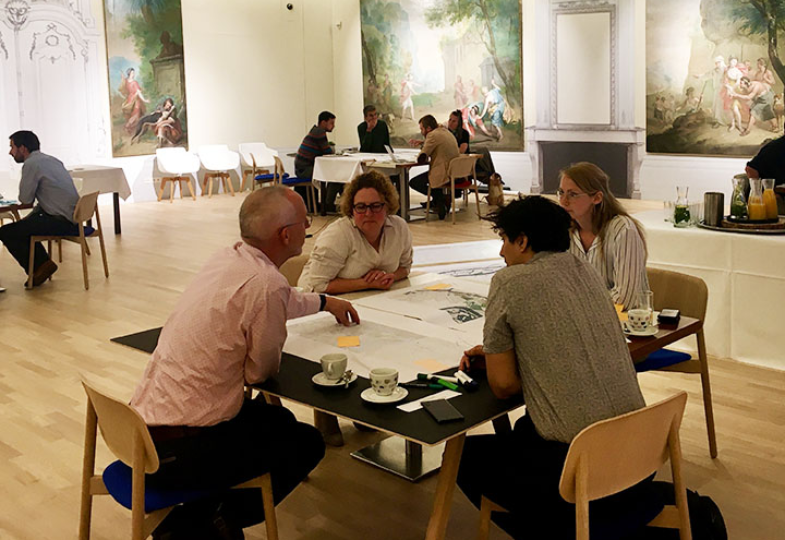
C5a brought different sectors together in a workshop in Dordrecht
5. Expanding the joint knowledge and tools base
Cooperation also takes place across programmes. A North Sea Region project CANAPE has found a common ground with three other projects working with peatlands. CANAPE restores wetland areas to reduce their CO2 emissions and improves their capacity to store water. The project also develops markets for natural products from wetland ecosystems.
CANAPE and Interreg North West Europe projects C-Connects and Care-Peat work together to ensure that they complement each other and provide mutual support by sharing information and methodology. Cooperating with C-Connects has given CANAPE access to a new, more efficient CO2 calculating methodology. Working with Care-Peat gives CANAPE access to its proposals concerning carbon crediting. CANAPE can, in turn, provide feedback to Care-Peat through its stakeholder groups.
CANAPE has also worked with the EU LIFE funded project Peat-Restore and various national projects and provided input on the C5a project’s policy recommendations.
Collaborating with other projects has given CANAPE access to greater knowledge around calculating the footprints of its pilot sites and provided useful information on water management.
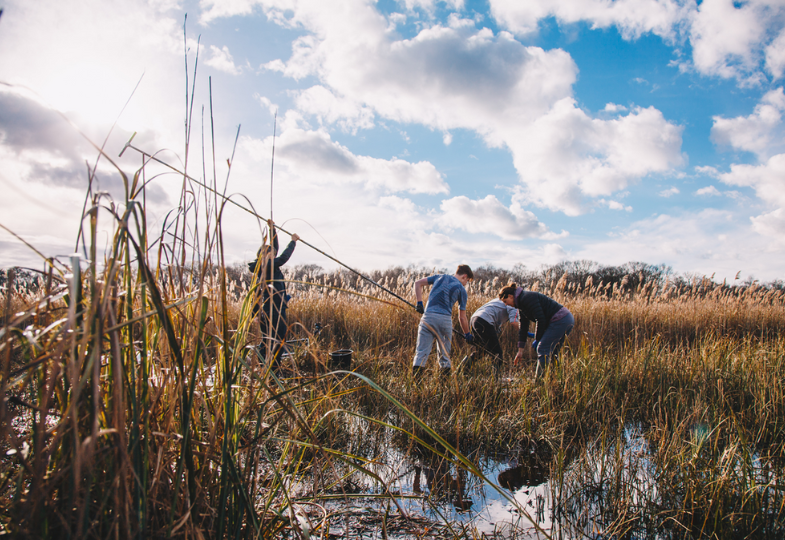
Canape restores and preserves peatlands
10 tips for project cooperation from the project advisors
01
“Cooperating with other projects can improve your professional skills and give access to innovation. You will also extend your network – this is how new projects are established.”
Flemming Jørgensen, TOPSOIL
02
“Start cooperating early to avoid duplicated work in the projects. Be proactive and don’t assume it’s too much work – it’s always worth it to collaborate and cast the net wider.”
Harry Mach, CANAPE
03
“Set up small and manageable milestones in the cooperation process.”
Peyman Khodabakhsh, CORA
04
“Try to share findings, combine activities and build on each other’s learnings. It delivers better outcomes.”
Renske Stumpel, Like!
05
“Exchange regularly on project administration and problem solving and look at things from different perspectives.”
Angelica Kaus, SalFar
06
“Agree a set of project values and standards at the outset, revisit them every annual meeting.”
Jeanette Rotchell, Sullied Sediments
07
“You can’t hurry love. Accept that this takes time to mature.” Egon Baldal, C5a & Building with Nature
08
“Transparent communication is the key, get in touch with each other and start communicating as soon as you can.” Peyman Khodabakhsh, CORA
09
“Make sure you have an excellent project coordinator who also coordinates all communications within the project partnership.”
Jeanette Rotchell, Sullied Sediments
10
“Continue drinking coffee together, even if it is in 2D over the internet.”
Egon Baldal, C5a & Building with Nature
A big thanks to all the interviewees:
Flemming Jørgensen, TOPSOIL
Angelica Kaus, SalFar
Renske Stumpel, Like!
Peyman Khodabakhsh, CORA
Jeanette Rotchell, Sullied Sediments
Charlotte Boeckaert, NuReDrain
Egon Baldal, C5a and Building with Nature
Harry Mach, CANAPE
About the author
Tuuli Veikkanen is a Communications Advisor at the Joint Secretariat.
